Mission & History
The Mission, Founding, and History of the Haffenreffer Museum.
Mission & History
The Mission, Founding, and History of the Haffenreffer Museum.
Mission
The Haffenreffer Museum of Anthropology inspires creative and critical thinking about culture by fostering interdisciplinary understanding of the material world. We provide opportunities for faculty and students to work with collections and the public, teaching through objects and programs in classrooms, exhibits, and at the Collections Research Center. Through this work and more, the HMA connects our campus and wider community to the world's cultural creativity.
Founding the Haffenreffer Museum
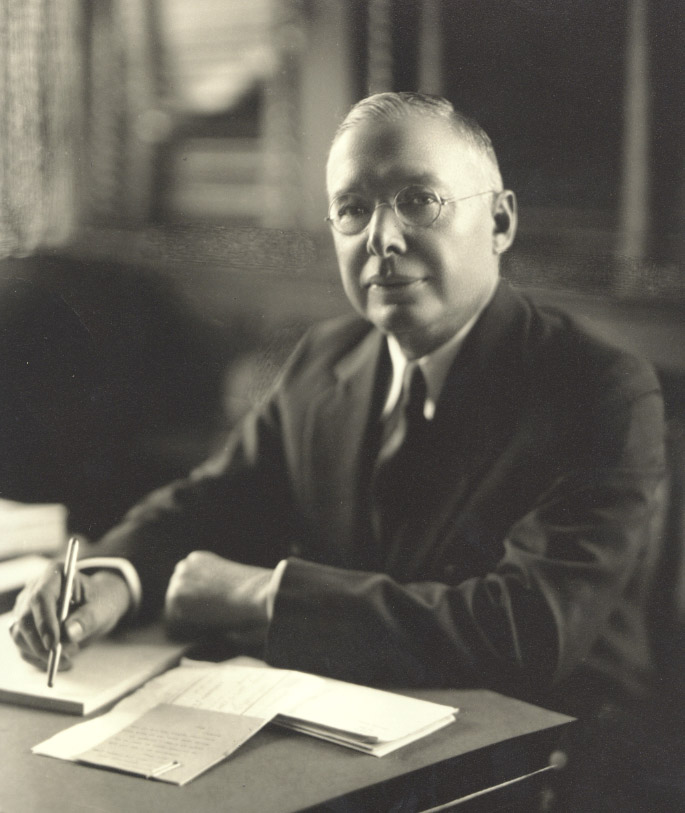 The origins of Haffenreffer Museum of Anthropology date to the early 20th century with the Native American archaeological and ethnographic collections of Rudolf F. Haffenreffer Jr. (1874-1954). The son of a brewer, Haffenreffer founded the Old Colony Brewing Company in Fall River, Massachusetts in 1895, acquired the King Philip and Enterprise breweries by 1912, and took control of the Narragansett Brewing Company in 1933. Skill at brewing and reading the economy (Narragansett was the first brewery to produce and deliver beer after Prohibition ended in 1933) led Haffenreffer to success and prosperity. In 1903, he acquired land in Bristol, at Mount Hope, as a summer farm that soon became his family's estate.
The origins of Haffenreffer Museum of Anthropology date to the early 20th century with the Native American archaeological and ethnographic collections of Rudolf F. Haffenreffer Jr. (1874-1954). The son of a brewer, Haffenreffer founded the Old Colony Brewing Company in Fall River, Massachusetts in 1895, acquired the King Philip and Enterprise breweries by 1912, and took control of the Narragansett Brewing Company in 1933. Skill at brewing and reading the economy (Narragansett was the first brewery to produce and deliver beer after Prohibition ended in 1933) led Haffenreffer to success and prosperity. In 1903, he acquired land in Bristol, at Mount Hope, as a summer farm that soon became his family's estate.
 Mount Hope holds a central place in the history of relations between English colonists and the Wampanoag people of southern New England. It is where "King Philip's War" began in 1675 and ended in 1676 with the killing of Metacom (King Philip). Shortly after his acquisition of the property, and undoubtedly inspired by its history, Haffenreffer began collecting Native American artifacts from New England and then ethnographic material from across North America. In order to house his growing collection, he built a fire-proof museum, which he named the "King Philip Museum" and opened to the public. The local paper celebrated it as “a sanctuary for New England Indian relics” and “the finest private Indian museum.”
Mount Hope holds a central place in the history of relations between English colonists and the Wampanoag people of southern New England. It is where "King Philip's War" began in 1675 and ended in 1676 with the killing of Metacom (King Philip). Shortly after his acquisition of the property, and undoubtedly inspired by its history, Haffenreffer began collecting Native American artifacts from New England and then ethnographic material from across North America. In order to house his growing collection, he built a fire-proof museum, which he named the "King Philip Museum" and opened to the public. The local paper celebrated it as “a sanctuary for New England Indian relics” and “the finest private Indian museum.”
Unlike most collectors of the time, Haffenreffer developed a close relationship with the local Native American leaders. He hired Rev. Leroy Perry, a Pocasset Wampanoag sachem from Fall River, to serve as an educational interpreter. He sponsored meetings of the Algonquin Council of Indians, an early association devoted to Native American rights. Haffenreffer was also active on the national scene and served on the board of George Heye's Museum of the American Indian in New York City (now the National Museum of the American Indian) for 22 years.
Coming to Brown University
After Haffenreffer's death, his widow, Mrs. Rudolf F. Haffenreffer, and their children, Rudolf F. Haffenreffer III and Carl W. Haffenreffer donated the museum, most of its collections, and a portion of the land at Mount Hope to Brown University in 1955. The university, in turn, used the museum as the basis for establishing anthropology as an academic discipline at Brown. Unlike its Ivy League peers, the university did not have an anthropology department. In accepting the gift, President Barnaby Keeney remarked, “The magnificent gift of land and buildings by the Haffenreffer family and the gift of the unique collections of American Indian objects by the Haffenreffer Foundation are an unexpected and very welcome acquisition to Brown University’s resources. The Museum will provide a sound basis for the development of research and teaching in anthropology."
J. Louis Giddings
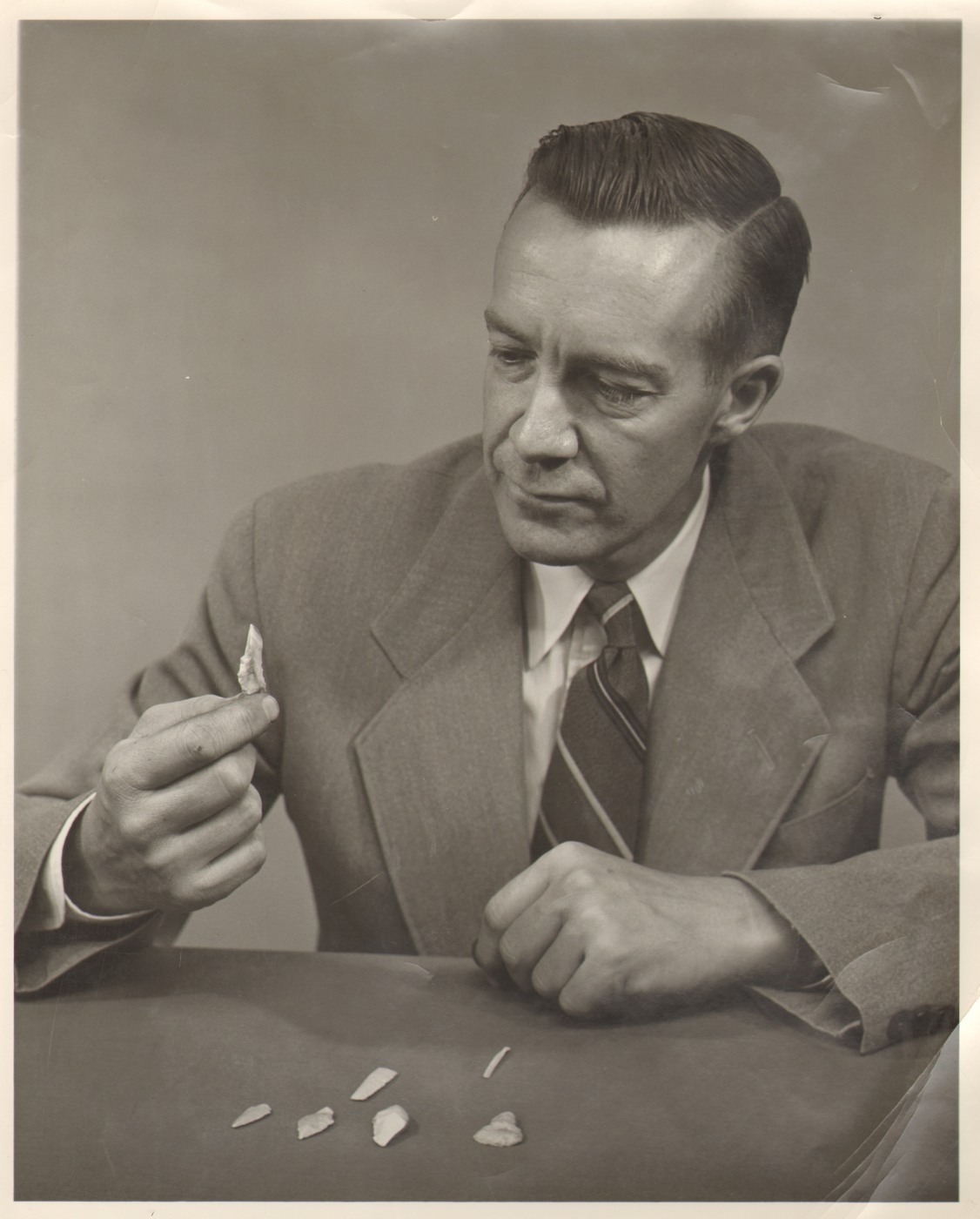 J. Louis Giddings was the first academic director of the museum. In 1956, the university recruited him to lead the museum and initiate a program in Anthropology within the university's Sociology Department. Over the course of eight years, Giddings transformed this small private museum with a Native American focus into a university teaching museum with worldwide scope and a dynamic, global vision. He engaged students in all aspects of its operation—from collections management to exhibitions and object acquisition.
J. Louis Giddings was the first academic director of the museum. In 1956, the university recruited him to lead the museum and initiate a program in Anthropology within the university's Sociology Department. Over the course of eight years, Giddings transformed this small private museum with a Native American focus into a university teaching museum with worldwide scope and a dynamic, global vision. He engaged students in all aspects of its operation—from collections management to exhibitions and object acquisition.
At the same time, Giddings expanded the foundations of western Arctic archaeology. He conducted archaeological excavations, performed ethnographic research, and established protocols for collaborative work with Indigenous communities far ahead of his time. He published numerous books and articles before and during his time at Brown including The Arctic Woodland Culture of the Kobuk River (University Museum Press, 1952) and Ancient Men of the Arctic (Knopf, 1967). Giddings died in 1964 from complications related to a tragic car accident. In his obituary, Froelich Rainey wrote, "it is seldom that a career in research has such clear and distinct progression toward success... We will all miss his inquiring mind, his soft-spoken enthusiasm, determination, and conviction."
Ruth Warner (Bets) Giddings
After Giddings’ tragic death, his wife Ruth Warner (Bets) Giddings, took over the museum’s operations (although without a formal title). Giddings (1919-1993) had a Masters degree from the University of Arizona where she studied with Edward Spicer. Her thesis was published as Yaqui Myths and Legends (University of Arizona Press, 1959). She renamed the museum “The Haffenreffer Museum of Anthropology” in acknowledgment of its increasingly global collections and goals. She was particularly interested in secondary school education and developed an outreach program that continues to this day. While director, she returned to school and received her doctorate from the experimental Union Graduate School. She succumbed to Alzheimer's disease in 1993.
Alex F. Ricciardelli was hired as director in 1968. Ricciardelli (1926-2010) received his doctorate in anthropology from the University of Pennsylvania under the direction of Giddings. He published a survey of archaeological resources in the Kongakut-Firth River area in northeast Alaska. He wrote his dissertation on factionalism among the Oneida Iroquois of New York. Ricciardelli received his first appointment at the University of Oklahoma and was invited to be a visiting assistant professor at Brown in 1962-63. He left Brown to take a position at SUNY Purchase.
Jane Powell Dwyer
 In 1972, Jane Powell Dwyer (1930-1983) was appointed director. Dwyer came to Brown at a time when interest in material culture studies was waning in cultural anthropology, replaced by a focus on social organization. She used her museum affiliation to try to reverse this trend. In her words, "Material culture studies can reveal a great deal about human beings when the analytical emphasis is taken from the object and focused upon the individual for whom the object functions." She established a Museum Studies program as well as expanded the museum's staff, initiated a publication series, introduced anthropology workshops for elementary grades, and instituted the Friends of the Museum program.
In 1972, Jane Powell Dwyer (1930-1983) was appointed director. Dwyer came to Brown at a time when interest in material culture studies was waning in cultural anthropology, replaced by a focus on social organization. She used her museum affiliation to try to reverse this trend. In her words, "Material culture studies can reveal a great deal about human beings when the analytical emphasis is taken from the object and focused upon the individual for whom the object functions." She established a Museum Studies program as well as expanded the museum's staff, initiated a publication series, introduced anthropology workshops for elementary grades, and instituted the Friends of the Museum program.
Barbara Hail
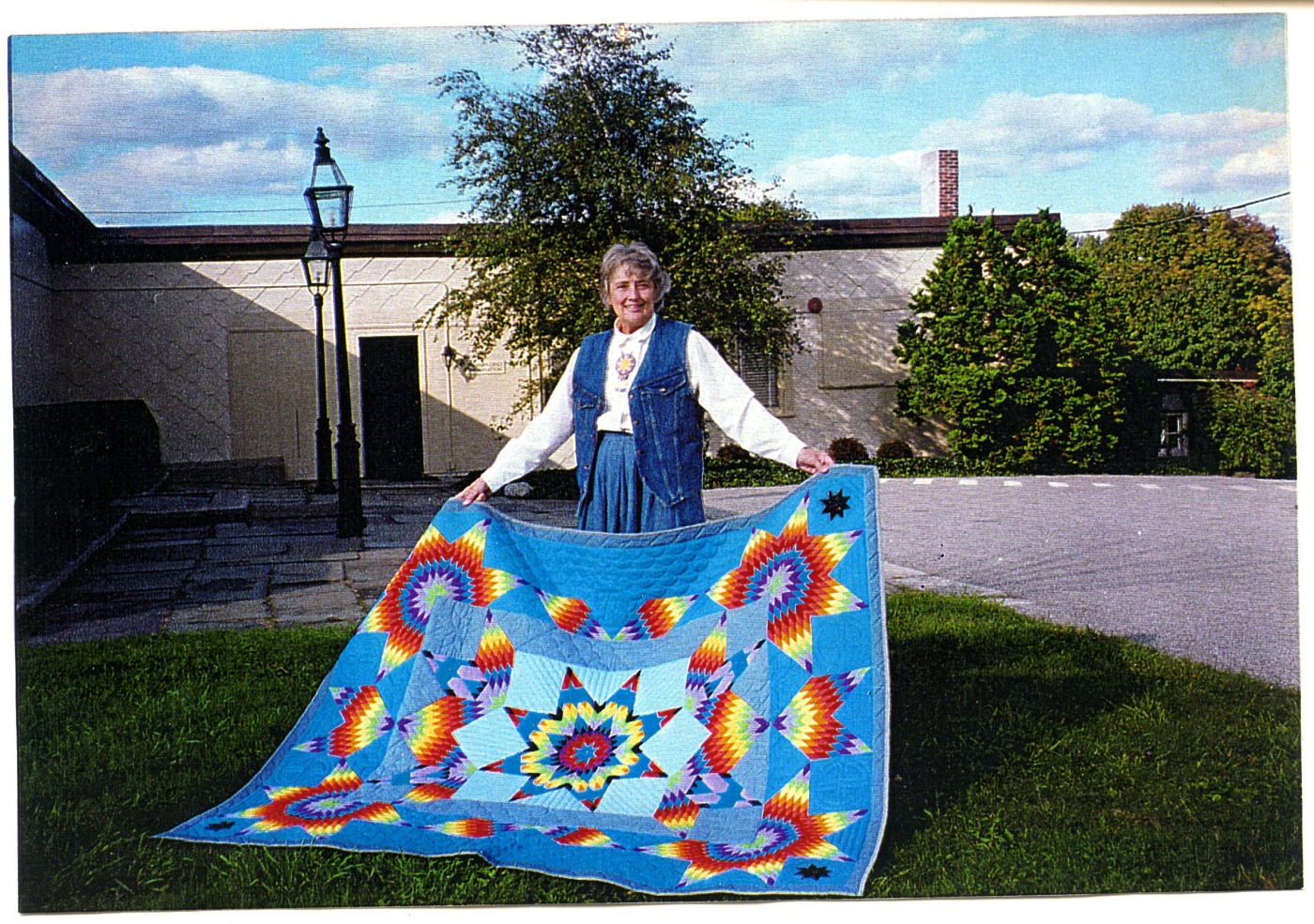 With Jane’s death, Barbara Hail was made Interim Director in 1983. Hail literally put the museum "on the map" of world museums. She did this by curating numerous exhibitions and publishing catalogues documenting its rich collections. Some of her publications include Hau Kola! The Plains Indian Collection of the Haffenreffer Museum of Anthropology (Brown University Press, 1981) and (with Kate Duncan) Out of the North: The Subarctic Collection of the Haffenreffer Museum of Anthropology (Brown University Press, 1989). In the process, she helped redefine the interpretation of Native American art by emphasizing the importance of working with descendant communities to develop deeper understandings of their material culture.
With Jane’s death, Barbara Hail was made Interim Director in 1983. Hail literally put the museum "on the map" of world museums. She did this by curating numerous exhibitions and publishing catalogues documenting its rich collections. Some of her publications include Hau Kola! The Plains Indian Collection of the Haffenreffer Museum of Anthropology (Brown University Press, 1981) and (with Kate Duncan) Out of the North: The Subarctic Collection of the Haffenreffer Museum of Anthropology (Brown University Press, 1989). In the process, she helped redefine the interpretation of Native American art by emphasizing the importance of working with descendant communities to develop deeper understandings of their material culture.
Shepard Krech III
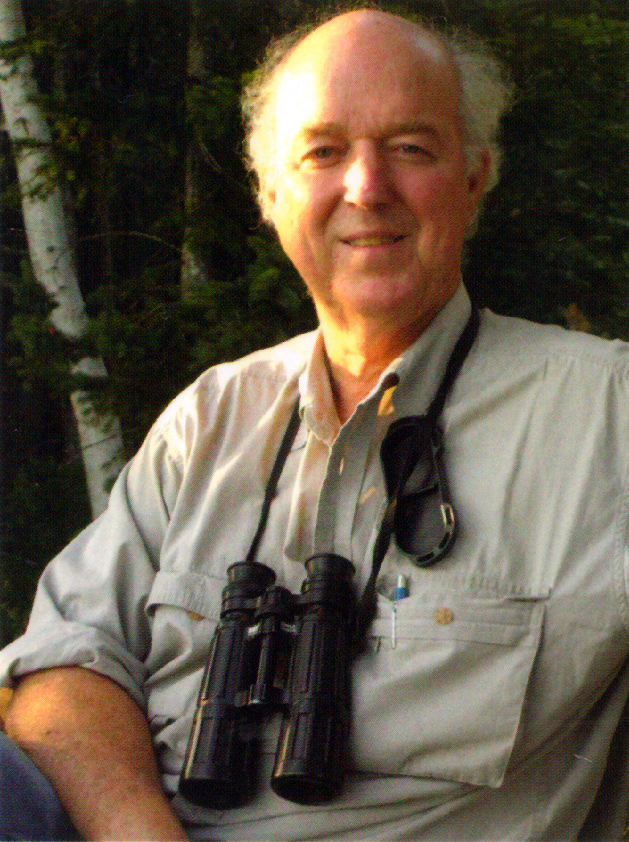 In 1988 Shepard Krech III was appointed to the directorship. Krech was interested in the intersections of humans and the natural world, the relationships of anthropology and history, and the history of museums. In 2003, Krech secured Manning Hall to serve as gallery space for the museum. This space, located in the heart of the campus, greatly increased the visibility of the museum. This gallery opened in 2004 and has been the premier place for exhibitions since that time, with satellite exhibitions in display cases in three other facilities on campus: the Rockefeller Library, the Steven Roberts ’62 Campus Center, and the Joukowsky Institute for Archaeology and the Ancient World. In 2008, Brown closed the Bristol facility to the public due to fire code issues. The former exhibition galleries and education spaces were converted into the Collections Research Center.
In 1988 Shepard Krech III was appointed to the directorship. Krech was interested in the intersections of humans and the natural world, the relationships of anthropology and history, and the history of museums. In 2003, Krech secured Manning Hall to serve as gallery space for the museum. This space, located in the heart of the campus, greatly increased the visibility of the museum. This gallery opened in 2004 and has been the premier place for exhibitions since that time, with satellite exhibitions in display cases in three other facilities on campus: the Rockefeller Library, the Steven Roberts ’62 Campus Center, and the Joukowsky Institute for Archaeology and the Ancient World. In 2008, Brown closed the Bristol facility to the public due to fire code issues. The former exhibition galleries and education spaces were converted into the Collections Research Center.
Steven Lubar
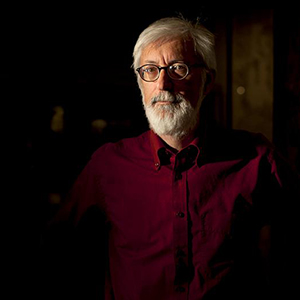 In 2010, Steven Lubar, Professor of American Studies and Director of John Nicholas Brown Center for Public Humanities and Cultural Heritage, was appointed Interim Director. He established CultureLab in Manning Hall to provide opportunities for students and visitors to gain hands-on experience with objects from the Museum's permanent collection. In 2012, William Simmons (1938-2018), Professor of Anthropology, was appointed as the Haffenreffer Museum’s Acting Director. Simmons had been one of Giddings’ first undergraduate students in the 1950s.
In 2010, Steven Lubar, Professor of American Studies and Director of John Nicholas Brown Center for Public Humanities and Cultural Heritage, was appointed Interim Director. He established CultureLab in Manning Hall to provide opportunities for students and visitors to gain hands-on experience with objects from the Museum's permanent collection. In 2012, William Simmons (1938-2018), Professor of Anthropology, was appointed as the Haffenreffer Museum’s Acting Director. Simmons had been one of Giddings’ first undergraduate students in the 1950s.
Robert Preucel
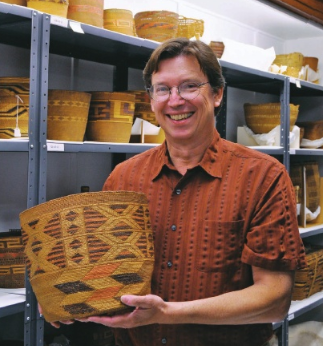 In 2013, Robert Preucel was hired as director. Previously a professor at the University of Pennsylvania and curator at the Penn Museum, he is a specialist in Southwestern archaeology and particularly interested in collaborative methodologies and indigenous perspectives. He initiated a project of modernizing the museum by securing external grants and making new staff hires.
In 2013, Robert Preucel was hired as director. Previously a professor at the University of Pennsylvania and curator at the Penn Museum, he is a specialist in Southwestern archaeology and particularly interested in collaborative methodologies and indigenous perspectives. He initiated a project of modernizing the museum by securing external grants and making new staff hires.